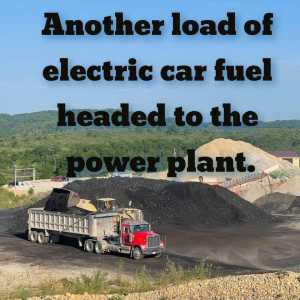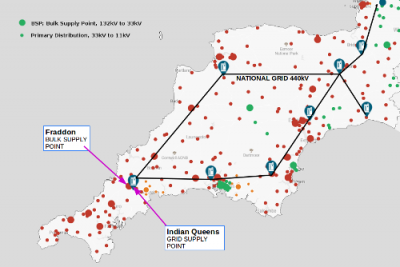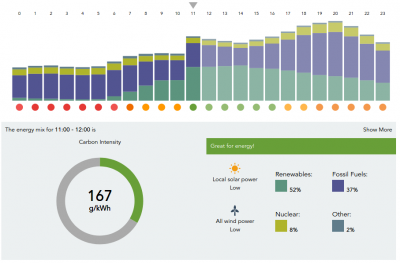Posted by: @majordennisbloodnokThanks, @jeff. A good deal to add to the reading-up I've already done, and that's a good thing.
It's also timely since we are looking seriously at the ID3 or its reclothed Cupra equivalent, so it's great to know that the VW stable is at least thinking of complying with the bigger picture. No guarantees, but better than no commitment at all.
The other vehicles to keep an eye on are those with V2L (vehicle to load) which have a separate socket to run domestic appliances or an optional cable to plug into the external charging socket, useful for camping for us. Such as the Ioniq 5 and other cars build on the same underlying EV platform. These are due to get V2G at some stage if articles are to be believed. Again i would suggest going for the larger battery versions and checking to see if dealers have heard anything to check the validity of this, particularly if buying second hand. May well find this functionality cannot be upgraded in some or all the currently shipped cars.
The Netherlands are doing quite a bit with V2G trails with different cars including the Ioniq 5, Renault Zoe etc. Worth checking out to at least get some insight into manufacturers who at least seem to be closer to launching something mainstream. They also talk about using the ISO 15118 CCS V2G evolving standards. Useful starting point, you will find more when searching.
Of course all this is dependent in the UK on what happens with tariffs, DNO approvals and potentially upgrades, the likes of Kaluza etc. and what cars actually make it to the UK.
Very interesting, @jeff.
The other thing I’m keeping an eye on is where the market goes with automotive batteries, which will markedly influence V2X overall. Without claiming any certainty, I’m cautiously predicting that the future will involve wireless charging on most of our road network, and vehicles eventually being designed with only around 100 mile range to travel on less accessible roads. If that’s the case - and it would be quite some time before we got there even if I am right - V2X would be less viable. If I’m wrong and manufacturers just ramp the range up and up, V2X becomes almost inevitable. Here be dragons, eh?
My wife and I have a plan for how we might dip our toes into the whole EV thing, and it involves being able to give it back after a few years in the expectation technology will have moved on and that what fits our needs hasn’t been developed yet. That’s the main reason I’m not too worried about changing standards and experimentation as long as it doesn’t involve huge up-front investment. All the info you’ve provided is helping a lot with that, so many thanks.
105 m2 bungalow in South East England
Mitsubishi Ecodan 8.5 kW air source heat pump
18 x 360W solar panels
1 x 6 kW GroWatt battery and SPH5000 inverter
1 x Myenergi Zappi
1 x VW ID3
Raised beds for home-grown veg and chickens for eggs
"Semper in excretia; sumus solum profundum variat"
Wireless charging from the road is an adventurous prediction @majordennisbloodnok and most certainly worthy of a Goon Show script.
Static inductive charging achieves a maximum 92% efficiency, which is itself dependent on accurate alignment of the coils.
Dynamic inductive charging from the road surface (whilst on the move) cannot utilise such precise alignment and will incur heavy losses. Trials have been undertaken using hidden conductive 'rails' within the road. But since power transfer falls off with the square of the distance from the rails to the coil on the EV, their proximity to the surface compromises the structural integrity of the surface.
If you're seeking insight into future electric transport, then I'm pretty sure that autonomous EVs would have to be developed first. Unlike human drivers, they can be relied on to stay in lanes.
Save energy... recycle electrons!
I remember listening to a keynote talk in a conference by Renault about 5 years ago, where they said the same thing - that the future of EV cars involved small batteries and continuous charging. I think they suggested it was overall cheaper than lots of large EV batteries, hence the direction Renault/Peugeot expected and were trialling. I was sceptical at the time...
Since then, every now and then I've seen plans for overhead cables / pantographs, wireless road charging, even slots in the road for sliding connections to be made!
I can't see how you'd progress to that state, the money and desire is all about long range cars not low performance ones. People are obsessed with "what if I run out", and buying larger cars than they need "just in case". I can only see that future for auto drive "Johnny cab" taxis, where nobody cares about the car performance anymore. That seems a huge culture shift for the UK.
It's more likely I think for lorries/coaches though, which are more utilitarian. Small batteries for low speed complicated towns, overhead cables & train type pantographs for long distance higher speed.
The future is hard to predict mind!
I’d guess (with a high margin for error) that the commercial vehicles would drive the installation of necessary infrastructure and then private vehicles would start to make use of it. Range anxiety would probably disappear if the infrastructure was visibly already there.
105 m2 bungalow in South East England
Mitsubishi Ecodan 8.5 kW air source heat pump
18 x 360W solar panels
1 x 6 kW GroWatt battery and SPH5000 inverter
1 x Myenergi Zappi
1 x VW ID3
Raised beds for home-grown veg and chickens for eggs
"Semper in excretia; sumus solum profundum variat"
@majordennisbloodnok i don't know your work situation. The savings by leasing an EV via a company car scheme or salary sacrifice scheme are dramatic due to the current tax system. Something to look into if it applies to you. A lot of EVs are currently purchased this way.
Especially with the cut in grants for EV purchases and the cut in grants for home chargers.
You’re on the money, @jeff. Not my work, but my wife’s. A salary sacrifice scheme to fund personal contract hire, so making the monthly numbers rather more attractive. Good spot.
105 m2 bungalow in South East England
Mitsubishi Ecodan 8.5 kW air source heat pump
18 x 360W solar panels
1 x 6 kW GroWatt battery and SPH5000 inverter
1 x Myenergi Zappi
1 x VW ID3
Raised beds for home-grown veg and chickens for eggs
"Semper in excretia; sumus solum profundum variat"
Posted by: @majordennisbloodnokYou’re on the money, @jeff. Not my work, but my wife’s. A salary sacrifice scheme to fund personal contract hire, so making the monthly numbers rather more attractive. Good spot.
Some example figures. It is a shame every employer doesn't do this
https://octopusev.com/salary-sacrifice/employee
My view on EV's is well known. I personally think the whole thing is a con and no way a 'green' way forward given in the region of 70% of electricity generated in the UK is via fossil fuels. 67% of which is coal. Totally unsustainable and only lining the pockets of business and politicians. A disgrace.
Retrofitted 11.2kw Mitsubishi Ecodan to new radiators commissioned November 2021.
14 x 500w Monocrystalline solar panels.
2 ESS Smile G3 10.1 batteries.
ESS Smile G3 5kw inverter.
@morgan In the past year coal made up 1.7% of the UK power mix. Your numbers would be 47% of the UK power mix is coal. That just isn't anywhere near true as its a factor of 27x out.
In the longer-term, the efficient use of electricity to power vehicles also depends where you live @morgan
I'm in Western Power's SW Region. We often have an abundance of renewable electricity... beyond the capability of the GSP transformers to pass back to the National Grid. Once companies offer Time-of-Use tariffs with regional costings, it makes far more sense to use the electricity locally. The battery capacity of a typical EV is more than double that which you'd need to run a house with a heat-pump, so this would incentivise the local population to more rapidly move towards electric transportation.
As an example, I've just checked the statistics for a Bulk Supply Point transformer at Fraddon in central Cornwall. This is sited adjacent to the furthest extent of the National Grid (440kV) at Indian Queens.
The air today is still, so the wind-turbines on the north-Cornwall coast will be generating naff-all. And the sun is erratic with about 50% of the sky covered by large white cumulus clouds.
Here's the Energy Mix data for that Fraddon supply area just after 11am:
Until Ofgem stipulates that ToU tariffs from Energy Suppliers must be based on regional (not national) statistics, the areas which generate most of the UK's renewable electricity will continue to discard it.
Save energy... recycle electrons!
Posted by: @morganMy view on EV's is well known. I personally think the whole thing is a con and no way a 'green' way forward given in the region of 70% of electricity generated in the UK is via fossil fuels. 67% of which is coal. Totally unsustainable and only lining the pockets of business and politicians. A disgrace.
Whilst I agree with @Batalto that your figures seem to be wrong (and if they're not then I'd be grateful for you posting where you got them from), let's assume for a moment that you're right.
You might want to take a look at this TED talk
In it are a number of insightful thoughts even if the American "just a couple of mates having a chat" style grates a bit. The most important one I want to highlight here is that to decarbonise the grid you don't fix your supply and then get everyone onto it; you do it the other way round. By getting everyone onto a single power model, every improvement you make from then on is being amplified by every consumer using it. In other words, you collect all your problems into one big one, then spend all your effort in one area of improvement rather than many. If your solution isn't perfect, no problem because the improvement has still benefited a huge number of consumers. If you need to make your improvements in several stages, no problem because it's still just one audience and each stage will show benefits across the whole consumer base.
Look at cars now and if you move 100% fossil fuel dependent cars to 70% fossil fuel dependence, that's a 30% improvement. Take into account transmission losses and the like and no doubt that improvement will look more like 20%, but that's still a big improvement.
Now if you look at the National Grid's figures nationally (thanks @transparent), we're currently seeing a mix involving 55% fossil fuels so charging an EV right now will mean anything up to a 45% improvement. If you were the Prime Minister and were being advised you could make a change that would see that kind of improvement wouldn't you at least want to have a second look?
Now I'm well aware your post also has an implied rebuke towards our governments both nationally and internationally that suggests moving to EVs is nowhere near enough of a change to meet our obligations, and that far more honest effort needs to be brought to bear. In that I would wholeheartedly agree with you.
105 m2 bungalow in South East England
Mitsubishi Ecodan 8.5 kW air source heat pump
18 x 360W solar panels
1 x 6 kW GroWatt battery and SPH5000 inverter
1 x Myenergi Zappi
1 x VW ID3
Raised beds for home-grown veg and chickens for eggs
"Semper in excretia; sumus solum profundum variat"
- 26 Forums
- 2,396 Topics
- 54.3 K Posts
- 176 Online
- 6,077 Members
Join Us!
Worth Watching
Latest Posts
-
RE: Recommended home battery inverters + regulatory matters - help requested
The diagram below is a simplified view of the internals...
By Batpred , 1 hour ago
-
RE: Heat pump not reaching flow temperature
@davec Ive had a look at the screenshots. Lots of th...
By JamesPa , 1 hour ago
-
RE: Vaillant aroTherm not heating with many faults
When I had a series of apparently unrelated faults my i...
By JamesPa , 2 hours ago
-
RE: Considering MLCP (Multi-Layer Composite Pipe) for ASHP
OK, TBH I dont know enough about MLCP to comment with a...
By JamesPa , 4 hours ago
-
RE: Predicted Heat Loss from MCS calcs vs EPC vs actual
My gut feeling is that the heat pump is right sized. ...
By Tim441 , 5 hours ago
-

RE: Power outages and storms: A surprisingly good DNO experience
Agreed, which is no more nor less than a customer shoul...
By Majordennisbloodnok , 6 hours ago
-

RE: Running from backup generaor in powercut?
@batpred In our case, 3 times each day when the Octopus...
By Toodles , 7 hours ago
-
RE: Advice for a novice on Mitsubishi Ecodan 6kW
Hi @sheriff-fatman Cycling at 5C and below is usuall...
By RobS , 7 hours ago
-
RE: New Fogstar 15.5kWh upright solution
@batpred Here's the latest Fogstar ready built pack....
By Bash , 9 hours ago
-
RE: RDSAP10 effect on existing heat pump EPC rating?
@mike-patrick yes, even though the current system is ru...
By Tim441 , 9 hours ago
-
RE: Solis inverters S6-EH1P: pros and cons and battery options
Solis confirmed that the S6 works with a single battery...
By Batpred , 9 hours ago
-
RE: Who has a V2G EV installation
I am wondering if in any V2X, would the car battery eve...
By Batpred , 10 hours ago
-

RE: Setback savings - fact or fiction?
Yes, by calculating it manually from the minute data, w...
By cathodeRay , 11 hours ago
-
Fan unit Making terrible noise HELP!!
One of a pair of fan units on an Earth Save Classic II ...
By GutoFfowc , 12 hours ago
-
RE: New Mitsubishi Ecodan 11.2kW installation - L9 errors and maybe more
OK. I think your system, which seems well designed, is...
By JamesPa , 13 hours ago
-

RE: Heatpunk Floor plan issues
It's usually the complete opposite... seldom that Safar...
By Mars , 1 day ago
-

RE: Fan is clipping ice build up from the front of unit.
@majordennisbloodnok I’ll not go there thanks! Toodles.
By Toodles , 1 day ago
-
RE: Running my new Nibe ASHP efficiently
I'm new to the forum. Did you get a reply to this last ...
By Mike @ Camelot , 1 day ago
-

RE: ASHP Energy Consumption: Aira 12kW heat pump
@grantmethestrength MCS requirements for DHW capacity h...
By Toodles , 1 day ago








